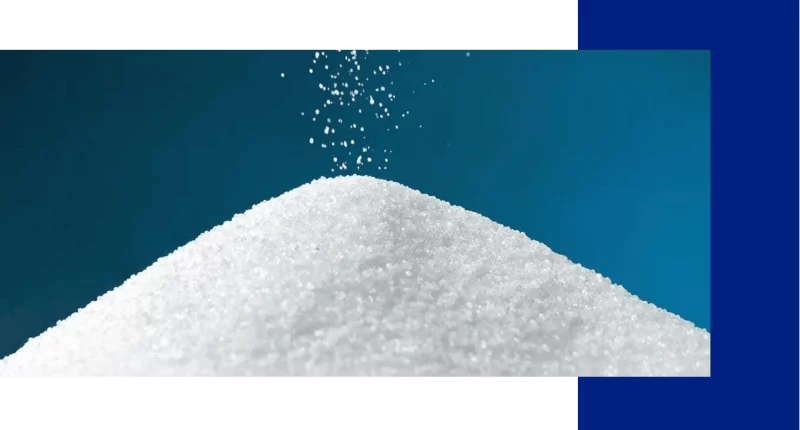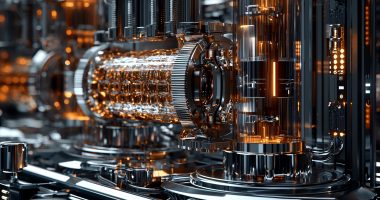- HPQ Silicon (TSXV:HPQ) announced that its subsidiary, HPQ Silica Polvere, made progress with the commercial validation of its proprietary Fumed Silica Reactor (FSR) process
- Technology supplier Pyrogenesis Canada’s (TSX:PYR) said that following the successful commissioning of the pilot system, its engineering team has identified the need for an additional enhancement to ensure a more consistent flow of fumed silica from the reactor to downstream recovery equipment
- PyroGenesis is refining HPQ Silica Polvere’s FSR technology to advance production at both pilot and future commercial scales
- HPQ Silicon stock (TSXV:HPQ) last traded at $0.23
HPQ Silicon (TSXV:HPQ), a microcap stock focused on the green engineering of silica and silicon-based materials, is announcing that its subsidiary, HPQ Silica Polvere, has made progress with the commercial validation of its proprietary Fumed Silica Reactor (FSR) process.
Enhancements for improved performance
Technology supplier Pyrogenesis Canada’s (TSX:PYR) has informed HPQ Silica Polvere that, following the successful commissioning of the pilot system, its engineering team has identified the need for an additional enhancement. This improvement aims to ensure a more consistent flow of fumed silica from the reactor to downstream recovery equipment, representing a significant upgrade from the previous lab-scale system.
Enhancing product quality
PyroGenesis is actively refining HPQ Silica Polvere’s FSR technology to advance production at both pilot and future commercial scales. The current enhancement focuses on an extended refractory conditioning phase, crucial for preparing the reactor’s internal structure to handle continuous, high-quality material output. This phase involves high-temperature curing of the refractory lining, which strengthens the lining and enhances its durability against off-gas interactions.
“By establishing these foundational elements now, we are setting up the pilot plant for steady, high-efficiency operation that will meet quality standards during both pilot runs and commercial-scale production,” added Pascali.
Aiming for commercial readiness
Once the refractory conditioning phase is completed in the next two weeks, the program will progress to the batch production phase, where the FSR will begin manufacturing fumed silica. The primary goal during this phase is to validate the process’s ability to consistently replicate essential physical properties, such as surface area, and rheological properties, including viscosity and thickening behavior.
Following this milestone, the system will transition to semi-continuous operation, targeting the production of at least 200 kg of commercial-grade fumed silica samples for comprehensive testing and validation. Throughout these phases, produced samples will undergo internal testing, with some sent to Evonik for evaluation, as per the Letter of Intent announced on July 9, 2024.
By Q1 2025, the focus will shift to optimizing pilot plant operations to produce food- and pharma-grade fumed silica with surface areas of 300 m²/g. The overarching goal is to operate the pilot plant at full capacity, achieving multiple daily production cycles and delivering commercial-quality material. With an estimated 20 hours of daily operation, the system is projected to produce approximately 161 kg per day, equating to 50,000 kg annually.
Leadership insights
“Implementing the enhancement at this stage is essential for a smooth transition to commercial production later on,” PyroGenesis’ president and CEO, P. Peter Pascali said in a news release. “By refining the operational process now, we’re ensuring that HPQ Silica Polvere’s clients can expect high-quality standards, setting the stage for a sustainable and efficient production scale-up.”
“These normal and expected process improvements during the scale-up phase do not alter our confidence in the transformative potential of our FSR technology,” Bernard Tourillon, President & CEO of HPQ Silicon and HPQ Silicon Polvere, added. “Our objective remains clear: to disrupt the fumed silica market by providing a cost-effective, high-efficiency solution that could redefine industry standards. We are making strides toward securing offtake agreements and are excited to lead the charge in revolutionizing fumed silica manufacturing.”
According to Fact.MR, the fumed silica market is expected to grow from US$1.45 billion in 2024 to US$2.36 billion by 2034 at a compound annual growth rate of 5 per cent.
About HPQ Silicon
HPQ Silicon is a Canadian green technology stock focused on producing the critical materials needed to reach net-zero emissions. The company’s efforts are centred on fumed silica, high-purity silicon, silicon-based anode materials for battery applications, and on-demand hydrogen production.
HPQ Silicon stock (TSXV:HPQ) last traded at $0.23 and has climbed 6.82 per cent higher since the start of the year.
Join the discussion: Find out what everybody’s saying about this green technology stock on the HPQ Silicon Inc. Bullboard, and check out the rest of Stockhouse’s stock forums and message boards.
The material provided in this article is for information only and should not be treated as investment advice. For full disclaimer information, please click here.
(Top photo of fumed silica: HPQ Silicon)





